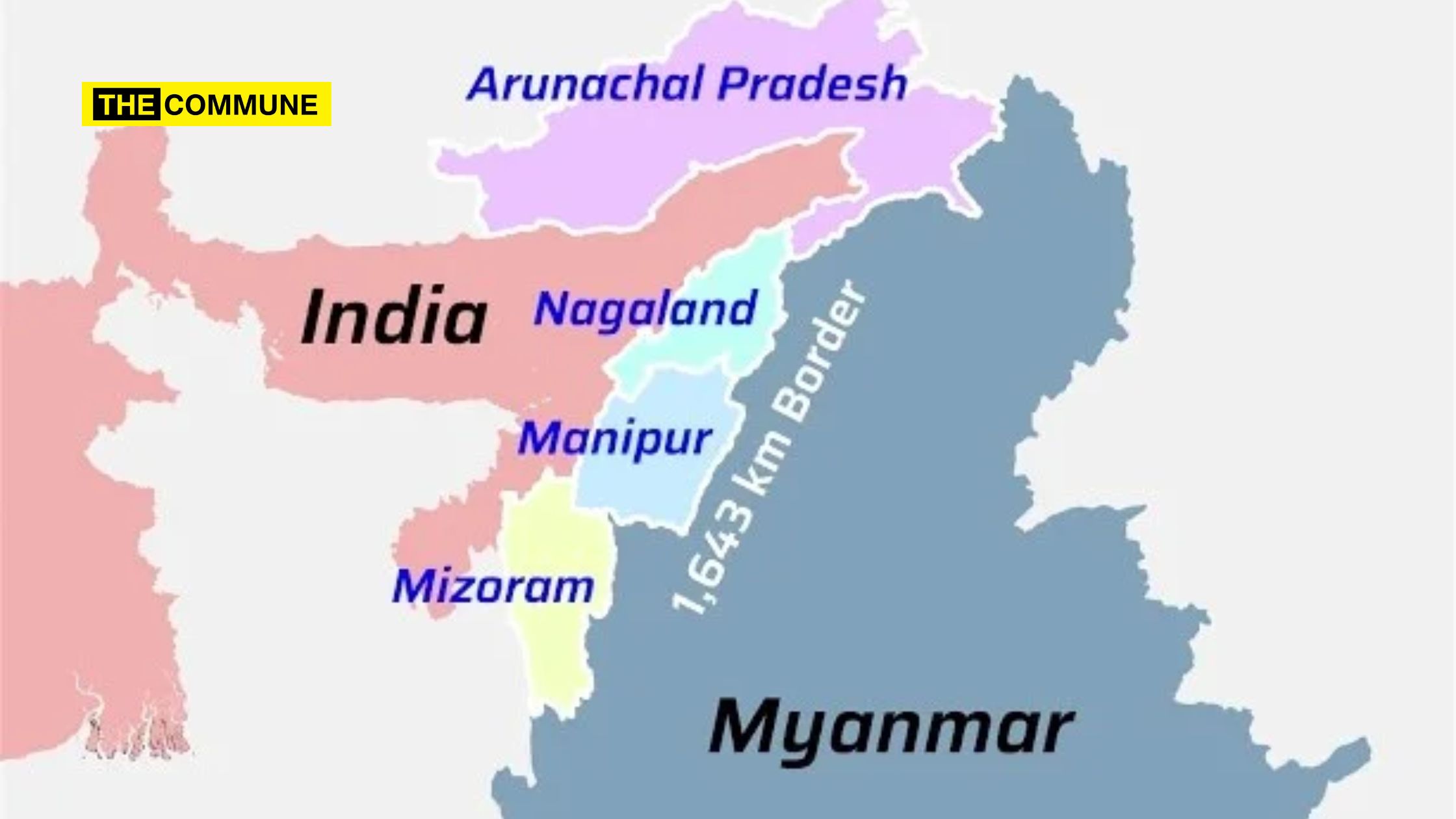
The passing out parade ceremony of Assam Police Commandos became a platform for Union Home Minister Amit Shah to announce a change in the Free Movement Regime (FMR) along the India-Myanmar border, stating that it will be secured akin to the Indo-Bangladesh border. This revelation comes amidst reports of escalating violence in Moreh, a town near the Myanmar border, resulting in the tragic death of a second Manipur Police commando.
"Indo-Myanmar border to be fenced to curb influx of illegal migrants, insurgents": Amit Shah in Guwahati
Read @ANI Story | https://t.co/7le71HBJa3#AmitShah #IndoMyanmarBorder #Assam pic.twitter.com/bdp1Ncx9IO
— ANI Digital (@ani_digital) January 20, 2024
The deceased commando, Takhellambam Saileshwore, succumbed to injuries from an attack that took place, involving rocket-propelled grenades (RPGs), leading to renewed concerns over the volatile situation. The unrest follows the recent arrest of two Kuki tribals, accused in the killing of a police officer, sparking protests and accusations against Manipur Police. Protests have been further fueled by allegations of attacks on Kuki tribes, prompting calls for central security forces to replace state personnel.
Amidst the turmoil, a poignant gesture of cross-border cooperation was witnessed as a fire engine from Myanmar rushed to help douse fires caused by the violence in Moreh. The incident highlights the significance of the Free Movement Regime (FMR), a policy in place since 1970, revived in 2016, allowing hill tribe members to cross the border with fewer checks.
The FMR originated on September 26, 1950, when the Indian Ministry of Home Affairs amended the passport rules of 1950 to allow citizens of India and Burma to move within 40 km of the border without carrying a passport or visa. Insurgent groups in India, such as the Nagas, Meitis, and Mizos, exploited this facility, crossing the border to Myanmar for arms training and returning to India to carry out terror attacks. Due to rising tensions, India introduced a permit system to cross the border in 1968, which remained in place for a long time. Following more such anti-national activities along this border, India was forced to reduce the 40 km limit to only 16 km in the year 2004. It was only in 2018 that the two nations signed an agreement to formalize the FMR, which had remained an informal agreement between the nations until then.
Since 2002, Assam Rifles, the Indian Army’s oldest paramilitary force, has been tasked with guarding the Indo-Myanmar border. The border had enjoyed “Free Movement Regime” (FMR) until now, allowing tribal people on both sides to travel up to 16 km inside each other’s territories without the need for a visa or passport.
Unfortunately, the FMR was misused by miscreants who fled to Myanmar after causing trouble in Indian states, especially Manipur. Another common complaint along the border was its support for the influx of illegal migrants, drug trafficking, and gold smuggling. Notably, Manipur had suspended the FMR in September 2022.
The tension in the region has prompted the Union government’s decision to end the FMR, causing concerns and opposition from Mizoram and Nagaland governments. The FMR initially introduced to facilitate the socio-economic ties of tribes residing across the border, has faced exploitation by insurgent groups. Attempts to address security issues have seen amendments in the FMR over the years.
India and Myanmar have a border stretching 1,643 kilometers, traversing through Mizoram, Manipur, Nagaland, and Arunachal Pradesh. With the potential scrapping of the Free Movement Regime (FMR), residents in the border regions will necessitate a visa for cross-border travel.
In the past three months, around 600 Myanmar soldiers reportedly sought refuge in Mizoram’s Lawngtlai district after their camps were seized by Arakan Army militants, as per The Daily Guardian. Mizoram, with its 510-kilometer porous border with Myanmar, has experienced an influx of thousands of anti-Junta rebels since the military coup on February 1, 2021. Government estimates indicate that numerous refugees have settled in various parts of Mizoram post-coup.
The Manipur government contends that insurgents from Myanmar exploit the free movement regime for their activities, given that Manipur shares a 398-kilometer border with Myanmar. Arunachal Pradesh shares a 520-kilometer border with Myanmar, and Nagaland shares a 215-kilometer border with the country.
Moreover, the perspective was that the ongoing conflict in the state persisted because Kuki insurgents relocated Chin refugees to the protected and reserved forests of Manipur. They also aligned with mercenaries from Myanmar to conduct attacks on security personnel and civilians within the state. This blatantly violated the provisions outlined in the FMR.
The India-Myanmar border is poorly guarded and incidents of unauthorized border crossings persist. The recent policy shift, coupled with the volatile situation in Manipur and conflicting views among the states, underscores the complexities surrounding border security and regional stability.
In recent times, tensions along this border have been high. Reports have surfaced of Myanmarese army personnel crossing over to India for shelter, civilians from Myanmar seeking refuge in Mizoram and Manipur, and a Myanmar rebel group capturing an important town along the border. The BJP government, prioritizing the safety of citizens, has now addressed this border issue, ensuring that the people from the North-Eastern states can enjoy a more peaceful life.
Symbianian is a freelance writer.
Subscribe to our channels on Telegram, WhatsApp, and Instagram and get the best stories of the day delivered to you personally.




